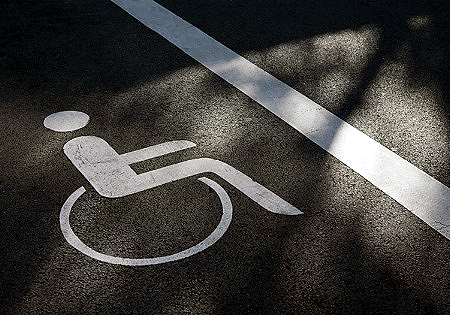According to ODO’s 2015 Market Study, travellers with disabilities book their trips online more than any other channel. Yet digital inaccessibility often prevents people with disabilities from engaging with travel organizations.
For all travellers, problems can crop up from time to time, such as lost luggage, a cancelled flight or a misunderstanding at a point of entry. Thankfully, obstacles like these don’t happen frequently.
Unfortunately, for people with disabilities – almost 20% of the American population – barriers to travel are exceedingly more commonplace. Various complications get in the way of gathering information, booking reservations, finding accommodations, communicating with industry reps, travelling to destinations, and visiting attractions. These are all areas where travellers without disabilities typically experience smooth sailing. That’s because the industry often fails to take accessibility into account when serving customers with disabilities.
It’s a short-sighted approach, considering that the number of travellers who have mobility issues, hearing loss and other disabilities is not only significant, but steadily rising, partly due to the aging baby boomer population.
Open Doors Organization (ODO), a Chicago-based non-profit group that educates the travel and tourism industries about the needs of people with disabilities, has conducted surveys showing that the majority of people with disabilities experience barriers when they travel. Yet this group spends over $17 billion annually on travel in the United States. Since people with disabilities rarely take trips solo, their actual contribution tops $35 billion or more.
ODO research has demonstrated that people with disabilities would be eager to travel and spend more if there were fewer barriers. Scandic Hotels, a Swedish chain that identified travellers with disabilities as a market several years ago, made a concerted effort to improve accessibility of its rooms, and then marketed directly to people with disabilities. As a result, an estimated 15,000 additional overnights per year were booked with the hotel chain. Business from the disability community has continued to rise since.
Let’s take a closer look at the types of barriers that are encountered by travellers with disabilities, and what the industry can do to create a better experience.
Getting Travel Information
According to ODO’s 2015 Market Study, travellers with disabilities book their trips online more than any other channel. Yet digital inaccessibility often prevents people with disabilities from engaging with travel organizations. If a special offer for a discounted cruise, for example, is presented as a starburst graphic, that would be a barrier for someone who is blind. A screen reader can interpret text, but not images. There are numerous technical issues like this one that can hinder someone’s ability to use a website, but they can be remedied by anyone familiar with web accessibility guidelines.
Another common barrier is a lack of information geared to travellers with accessibility needs. A tour bus company may have a wheelchair lift, but it may never get used if it isn’t mentioned in the brochures or on the website. A hotel will get many more takers for its accessible suite if it describes the actual features of the room. Companies that offer disability-friendly features should proudly draw attention to what they’re already doing to welcome guests of all abilities.
Booking and Communication
Online booking is convenient, but it only works if web barriers have been removed. For example, some people with limited hand dexterity need to use their keyboard to “tab” their way through online forms. These people will have more difficulty making a booking if the form fields aren’t in the right order and cannot be filled easily out using keyboard-only interaction. Using live chat or online support to ask questions, even when technical barriers are removed, can still be frustrating if the agent can’t easily address inquiries about accessibility.
Customer support staff should be properly trained in accessible customer service and should be aware of their legal obligations to provide an equal standard of service to customers with disabilities. They should also be well versed in the disability-specific services their company offers.
Getting There and Getting Around
Once a trip begins, logistical barriers can range from the inconvenient to the catastrophic. A baggage handler damages essential equipment. A train station lacks an audio induction loop system to allow people with hearing aids to detect announcements. A tourist attraction fails to install signage pointing the way towards its accessible entrance. A restaurant bans a service dog. A hotel desk clerk avoids making eye contact with the guest with a disability and addresses only her companion.
Some challenges, like a broken-down elevator, are simply the luck of the draw. But most of the time, barriers can be removed, or prevented in the first place, by considering the needs of travellers with disabilities alongside the needs of customers without disabilities. It’s the best way to ensure they’ll have a memorable vacation, straightforward business trip or effortless travel booking experience. And for the travel company, it’s a highly effective way to expand its network of delighted, diverse customers.
Simon is an electrical engineering dropout-cum-economics graduate of Queen’s University and the Chartered Financial Analyst (CFA) program. He is a member of the Honorary Order of Kentucky Colonels and administrator of the Air Canada Super Elite Group on Linkedin.

























































































































































































